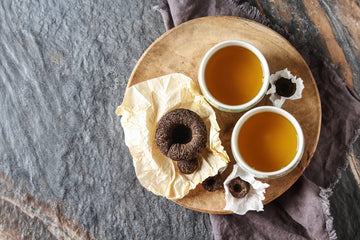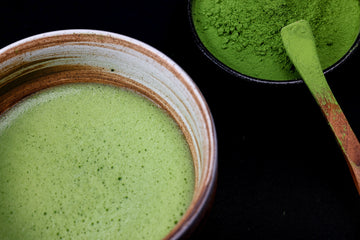Tea has been flavoured for centuries, with blends like Earl Grey and Jasmine Tea becoming some of the most iconic examples. The art of infusing tea with additional flavours—often referred to as "scenting" or "flavouring"—has evolved over time, but its roots can be traced back to the ancient tea traditions of China. In this blog, we’ll explore the history of flavoured teas, the common methods used to enhance their aroma, and the potential pitfalls that brands must navigate when crafting the perfect cup.
The History of Flavoured Tea
Flavoured teas date back to ancient China, where the practice of scenting tea with flowers like jasmine became a staple. The process was simple yet effective: fresh jasmine flowers were placed with drying green tea leaves, and the natural oils from the flowers would infuse the leaves with their fragrance. This method was so beloved that it spread across the globe, leading to the creation of other famous blends, such as the iconic Earl Grey.
The method used to flavour Earl Grey tea involves spraying natural oils, often from bergamot oranges, onto the tea leaves. This approach was a game-changer, allowing for consistent, large-scale production while maintaining the tea’s aromatic qualities. Over the years, as tea became more widely consumed, the practice of flavouring teas with oils and extracts expanded, with many brands incorporating various flavour profiles into their offerings.
Common Methods of Flavouring Tea
There are three primary methods used to flavour tea today: Inclusions, Scenting, and Oils (Natural or Artificial). Let’s dive into each one and discuss how they work, along with some potential concerns.
-
Inclusions
Inclusions refer to the practice of adding ingredients like herbs, flowers, or fruit directly into the tea blend. These elements are mixed with the loose tea leaves and may include anything from dried rose petals to pieces of citrus peel. The main appeal of inclusions is the natural infusion of flavours they bring. However, one significant downside is that not all inclusions are created equal. Poor-quality ingredients, or those that have been stored for too long, may not release their intended fragrance, leading brands to rely on added oils or flavourings to maintain the aroma and taste. This can raise concerns about authenticity and cost-efficiency, as using cheaper, lower-quality inclusions is more affordable for mass production but sacrifices the tea's overall quality. -
Scenting
Scenting is the practice of enhancing tea’s fragrance by exposing the leaves to a specific aroma. The traditional example of this is jasmine-scented green tea, where the tea leaves are exposed to fresh jasmine flowers to absorb their scent. In modern tea production, scenting is often done by spraying the leaves with essential oils. While this method is widely used, especially for teas like Jasmine and Earl Grey, it can be a bit controversial. The quality of the oils used matters—natural oils are generally more expensive and have a shorter shelf life than artificial alternatives. Some brands opt for cheaper, synthetic options to cut costs, which can compromise the purity and natural appeal of the tea. -
Oils (Natural or Artificial Flavouring)
The direct addition of essential oils, either natural or artificial, is perhaps the most widely recognised method of flavouring. Bergamot oil in Earl Grey is a prime example, as is the use of lavender or chamomile oils in herbal teas. While oils can deliver strong and distinct flavours, they come with a couple of risks. Artificial oils, while cheaper and longer-lasting, can sometimes lead to an overpowering or artificial taste, which many tea connoisseurs find unappealing. Natural oils, though more expensive, provide a more authentic flavour profile but require careful storage and handling to preserve their integrity.
What We Want to Talk About Flavoured Teas
There is often a misconception surrounding flavoured teas, with some believing that they are "unnatural" or "bad for your health." This view is understandable, considering the prevalence of artificial additives and poor-quality ingredients in the mass-market tea industry. However, it’s important to note that not all flavoured teas are created equally. The choice of flavouring method and the quality of the raw materials play a crucial role in the final product.
At Toss & Brew, we believe in celebrating the natural beauty of tea. That’s why our loose tea collection features only the finest organic leaves sourced from renowned tea-growing regions across the world. We don’t add flavourings to our handpicked Darjeeling First Flush or Dragon Well Green Tea because we believe their natural aromas and delicate flavours should be enjoyed as they are.
When crafting our blended teas, we opt for premium, whole ingredients—like lavender from Provence, cornflowers from Germany, and chamomile from organic fields—ensuring that every sip is as pure and fresh as possible. We also avoid mass production to maintain the integrity of our flavours, focusing on small batches that preserve the quality of the ingredients.
Reference





